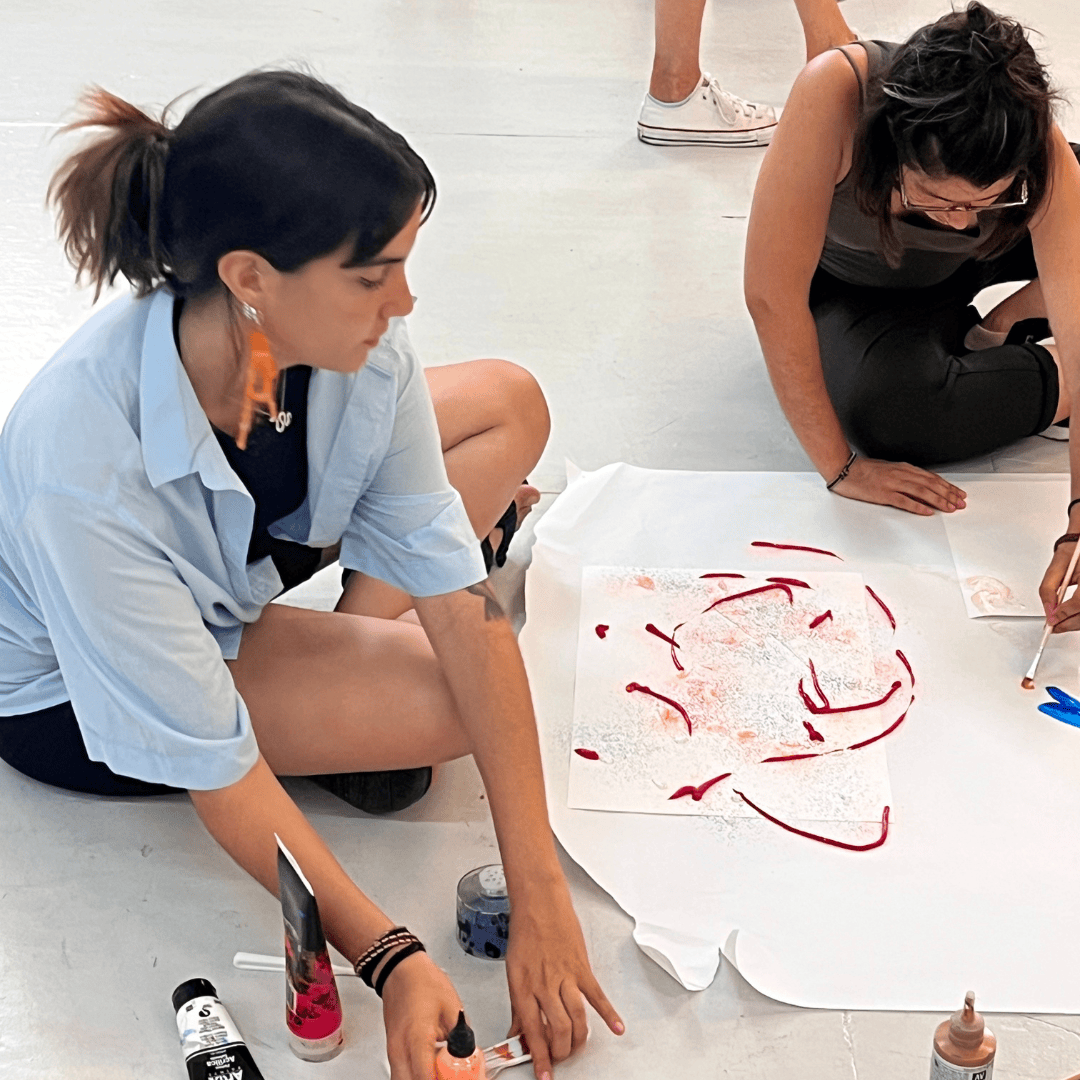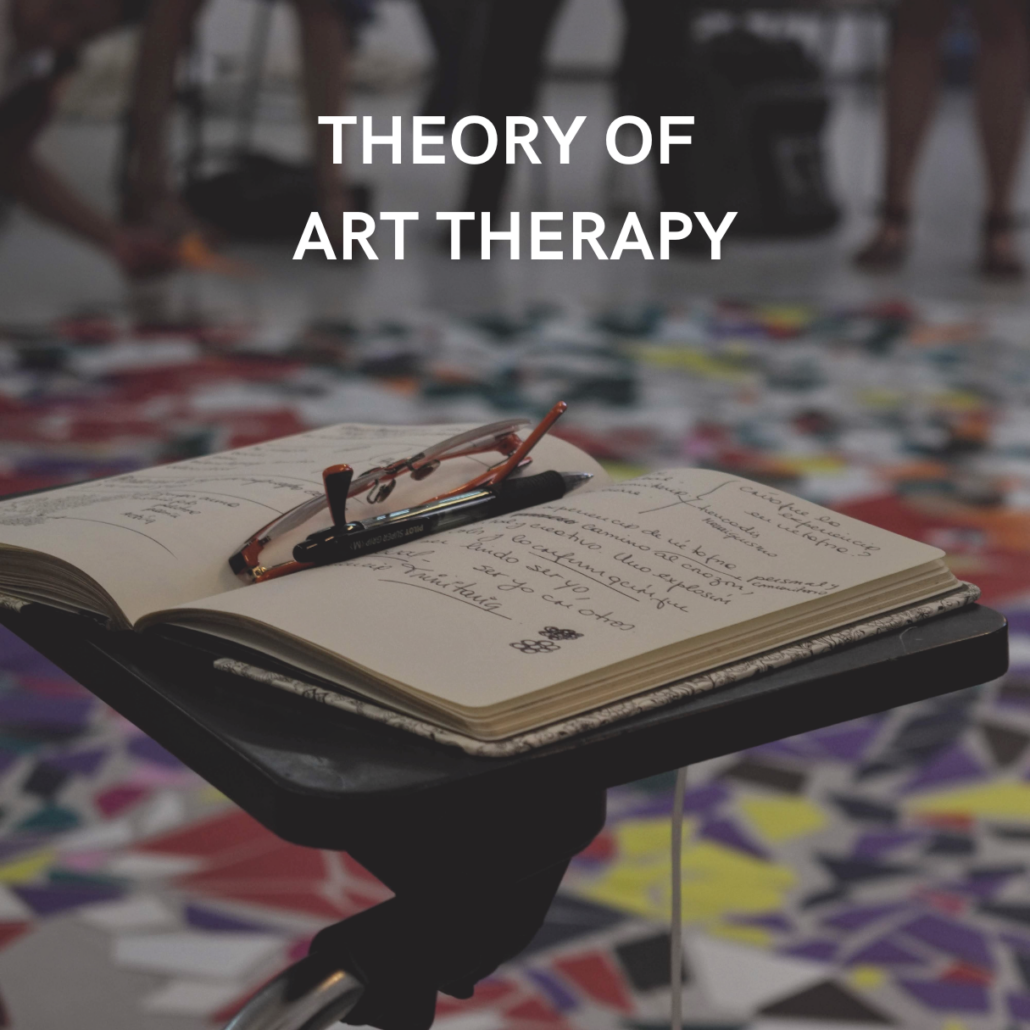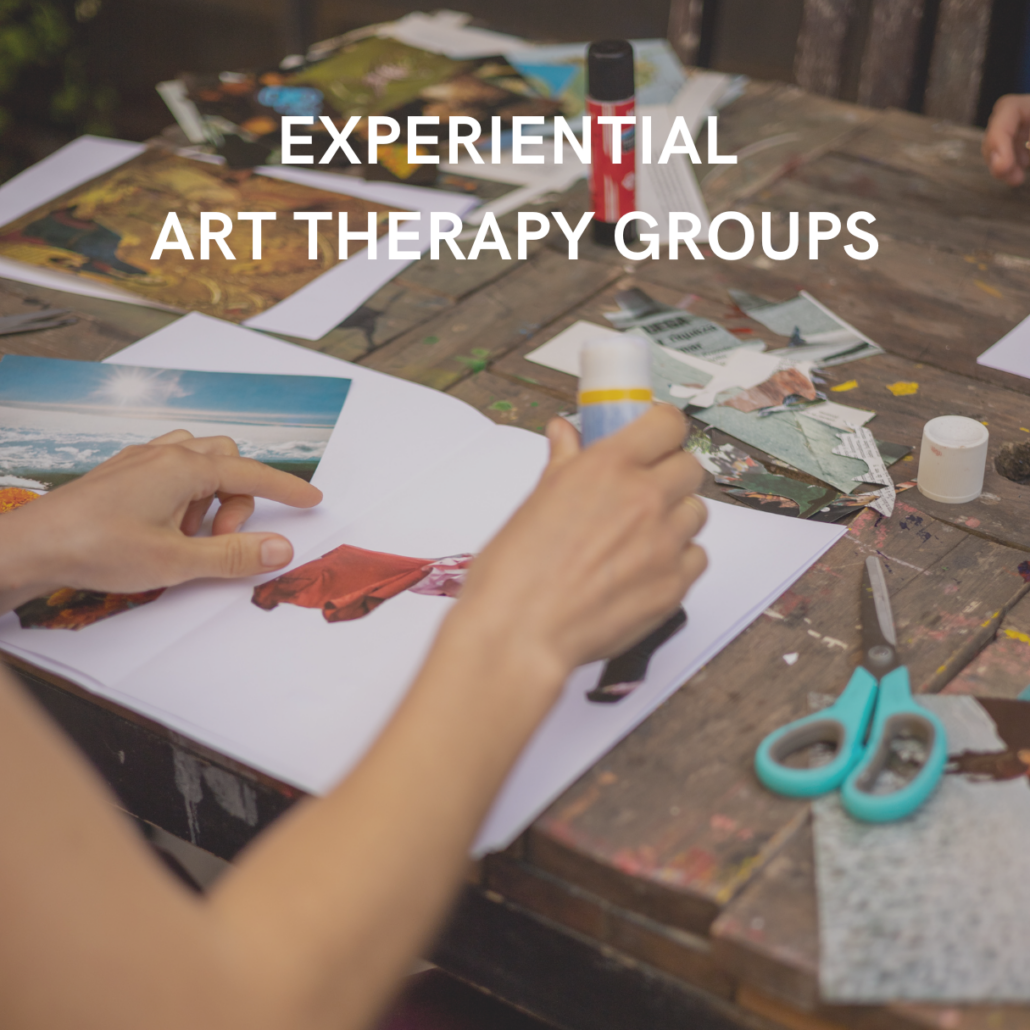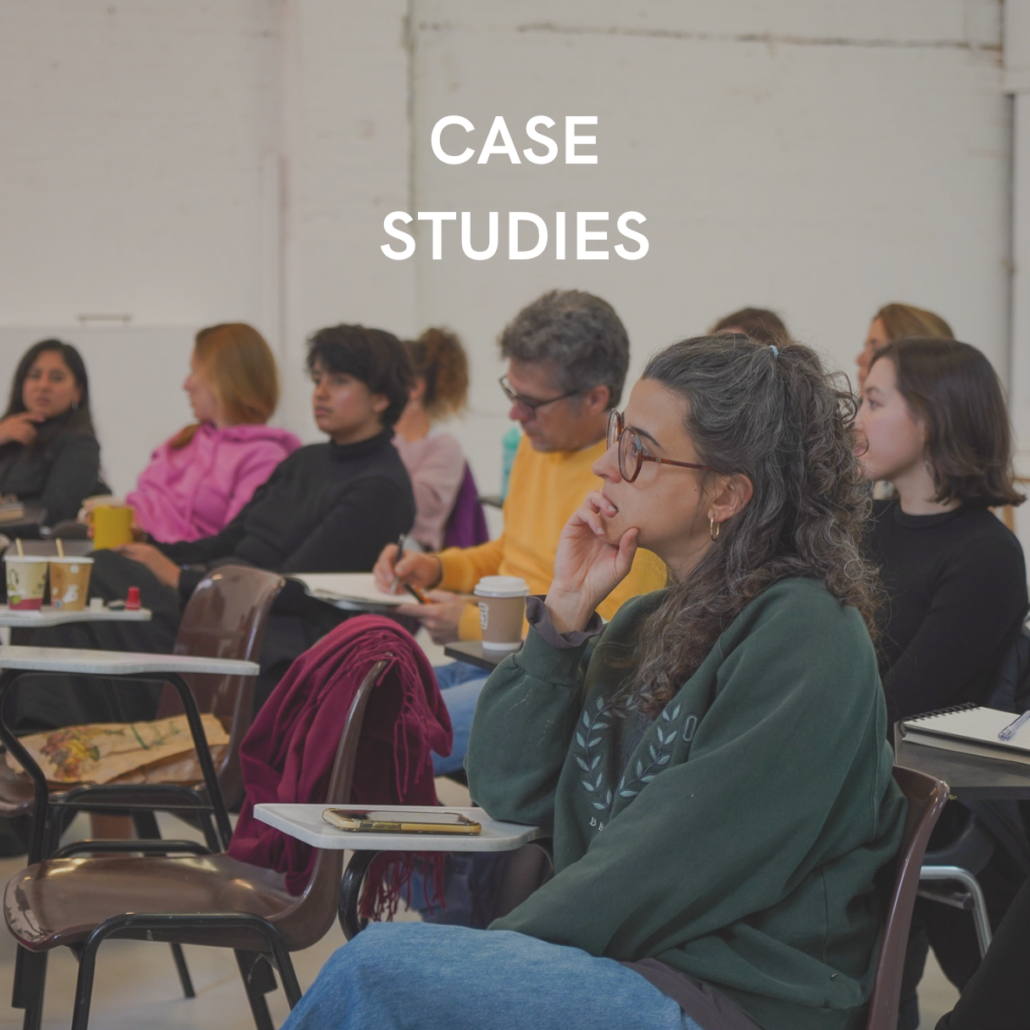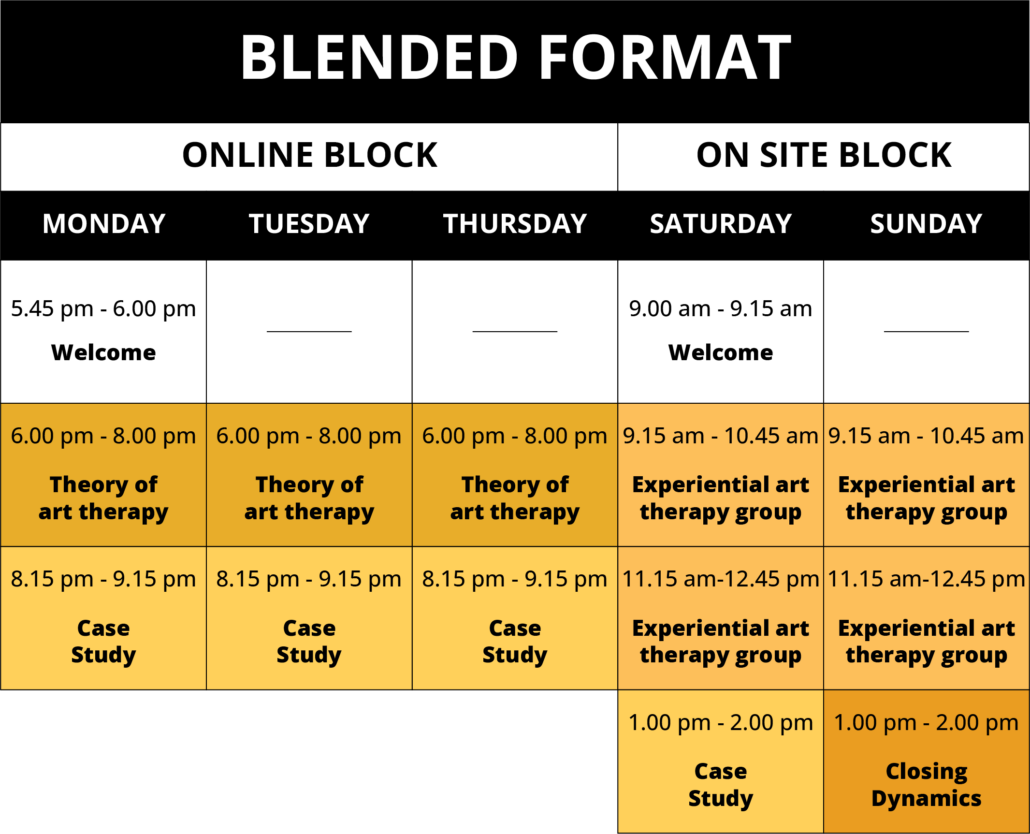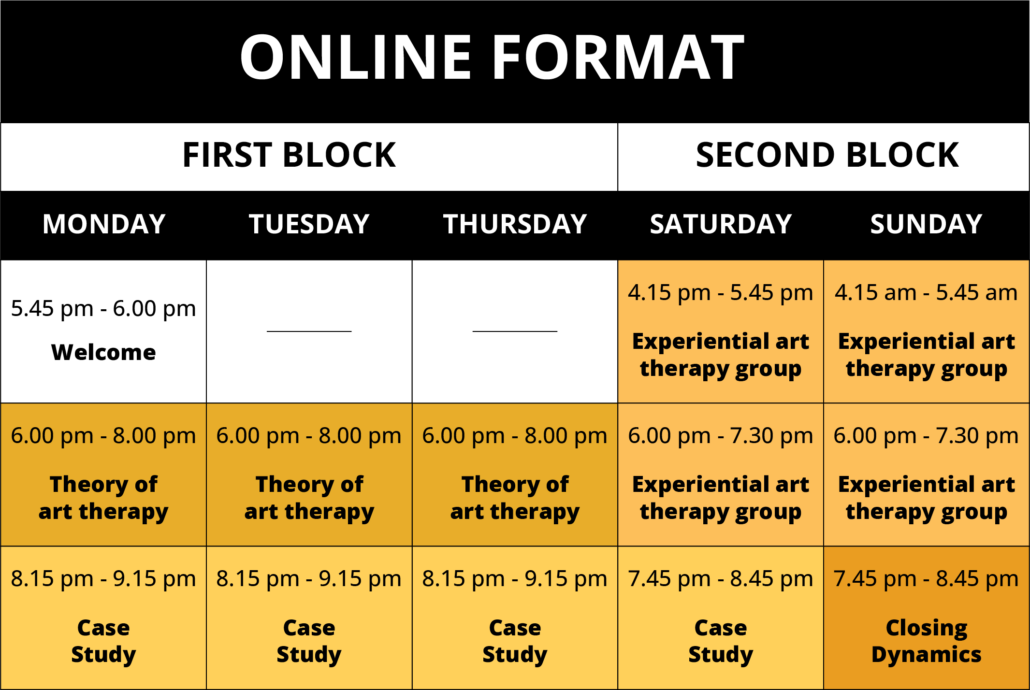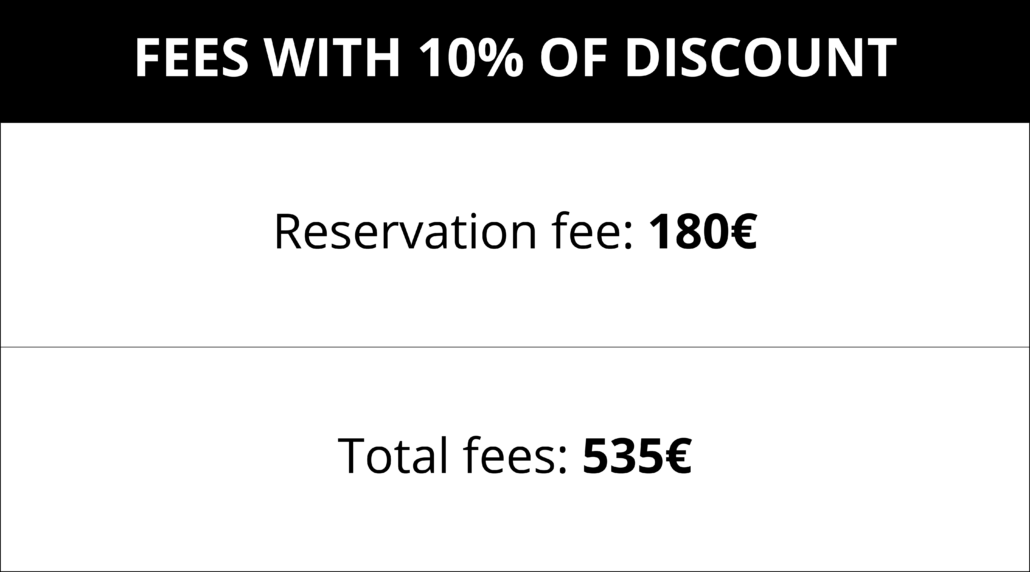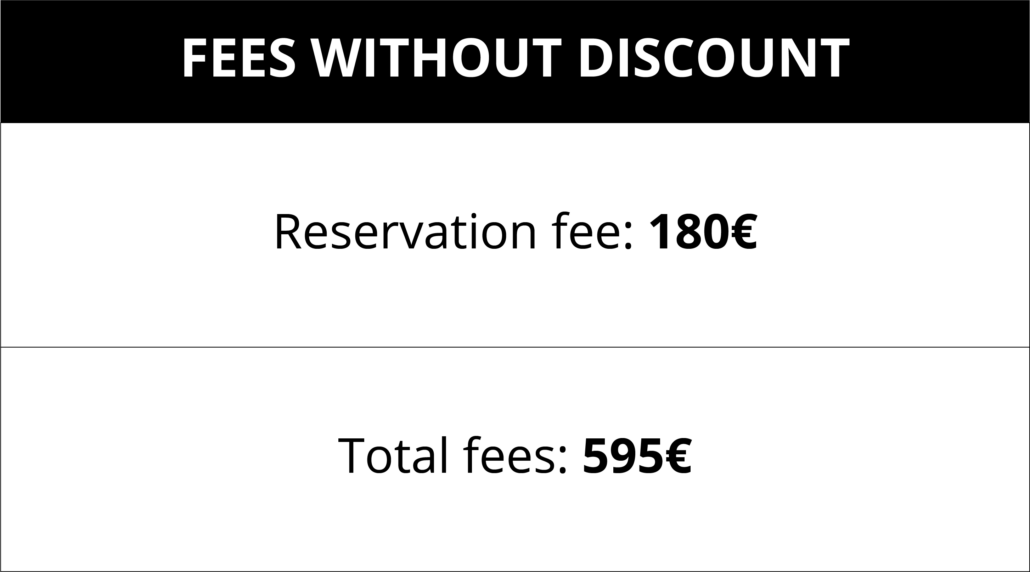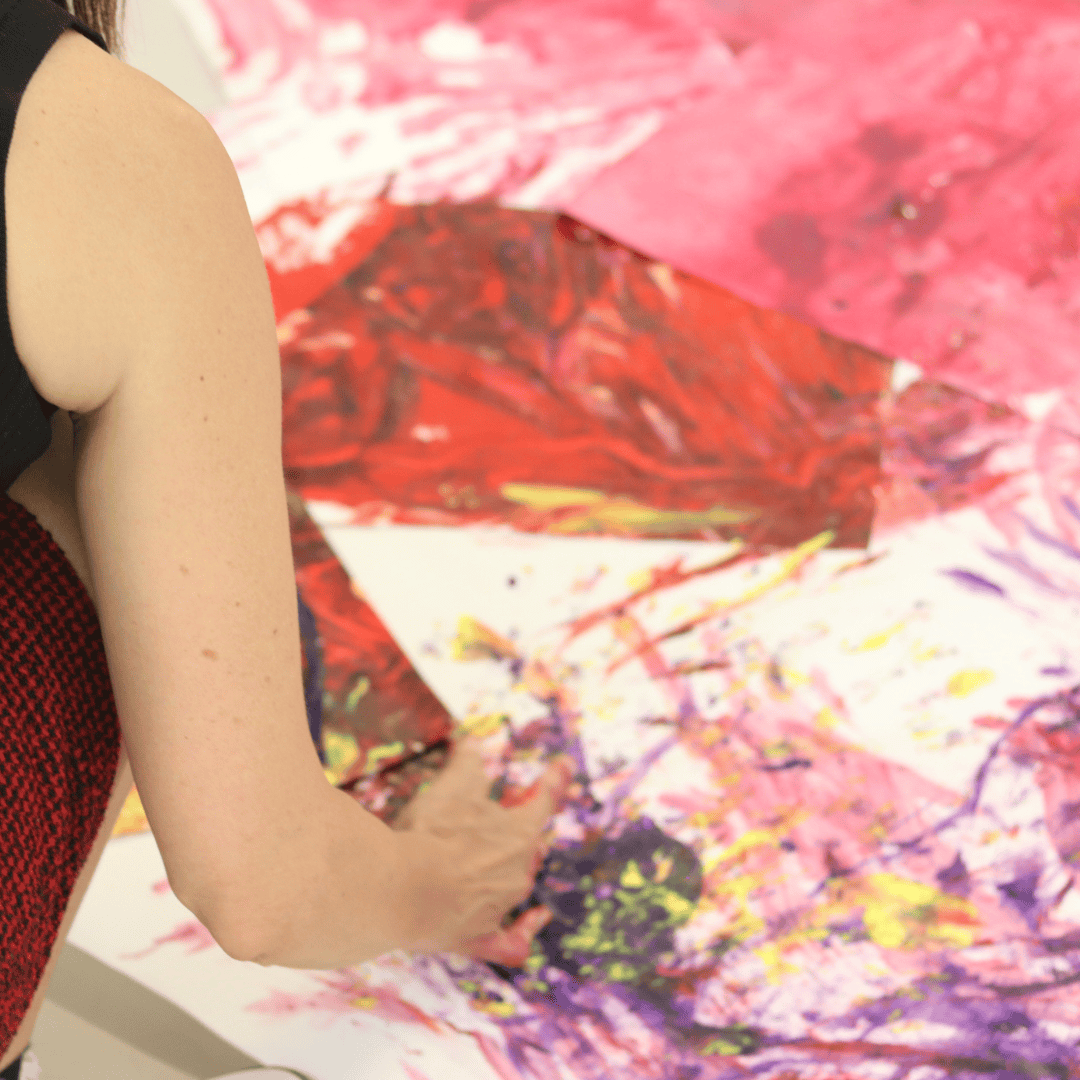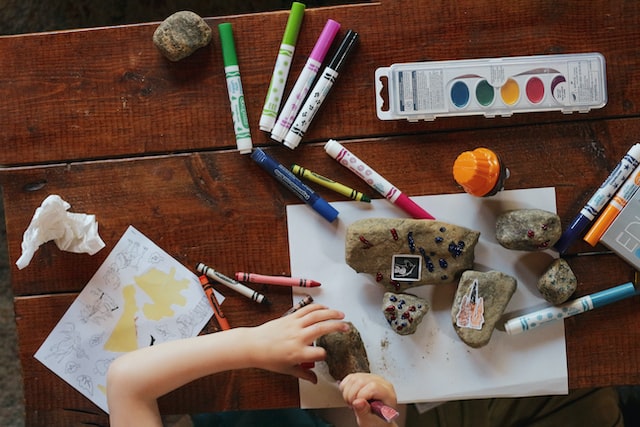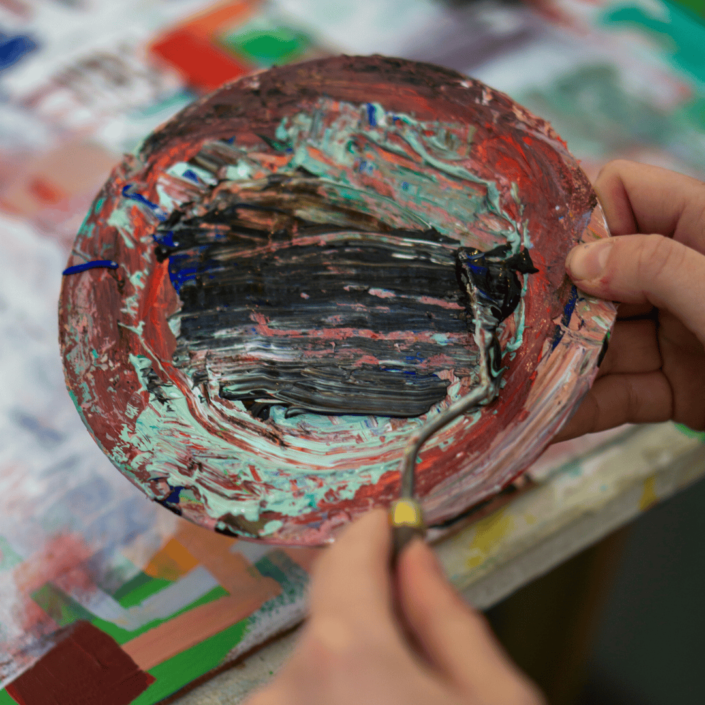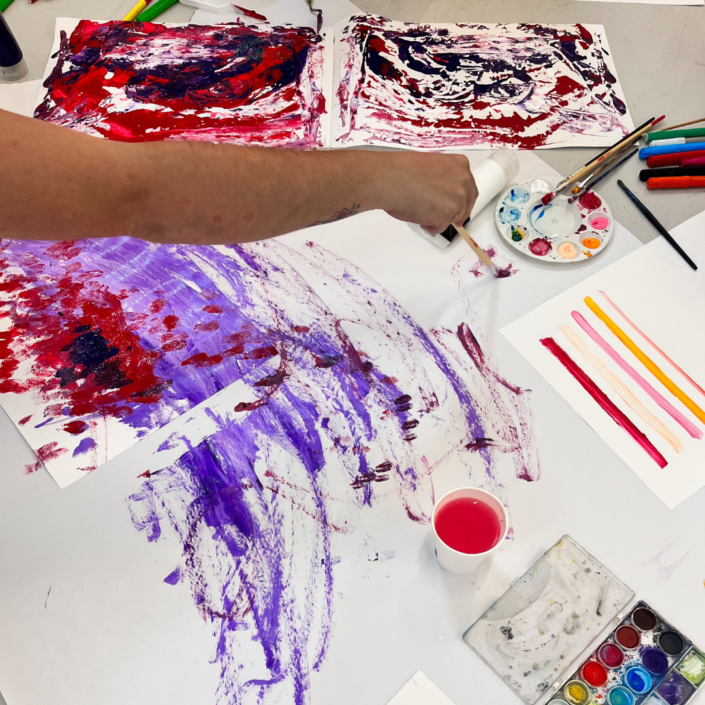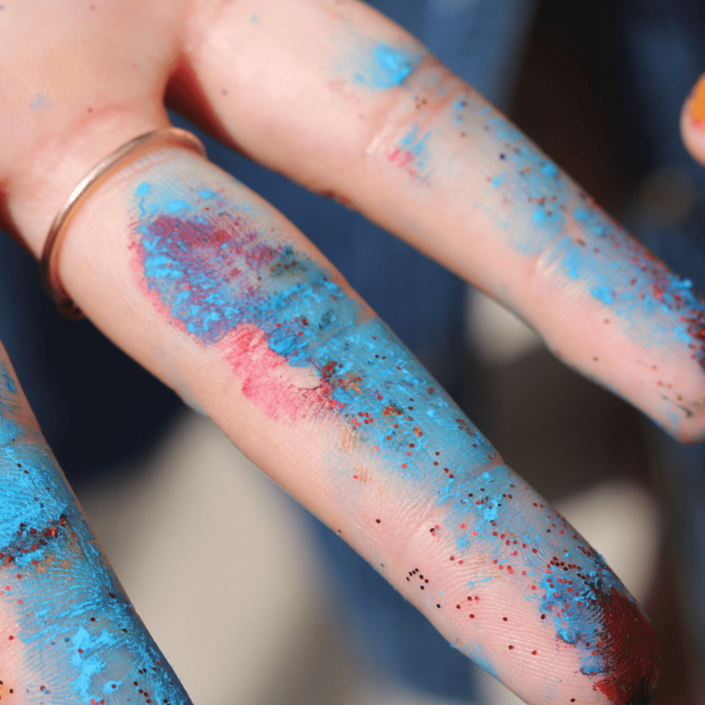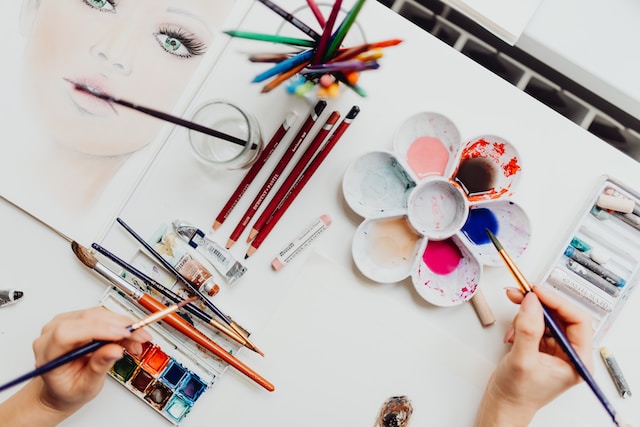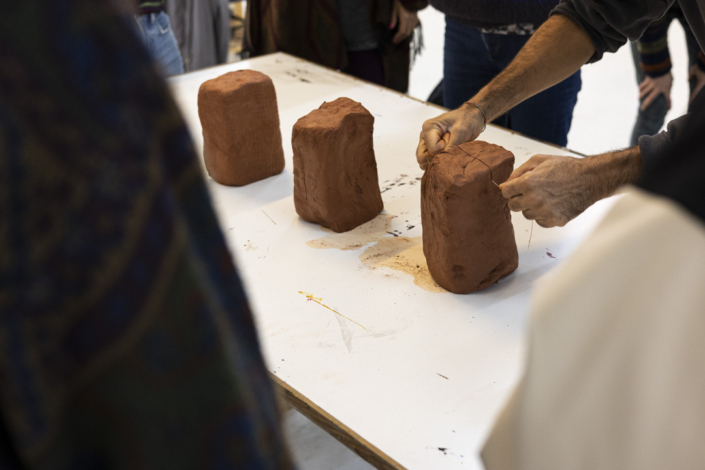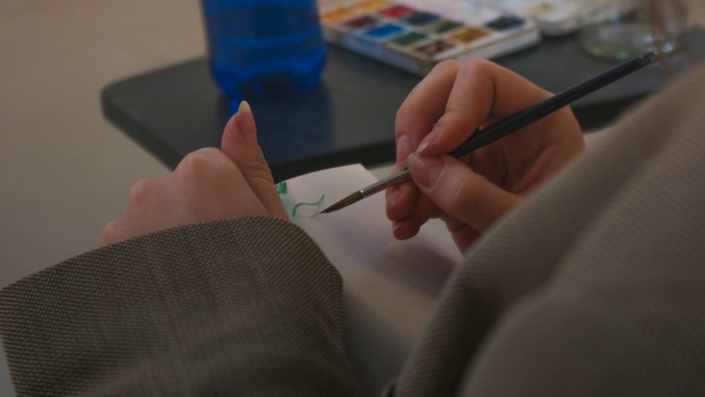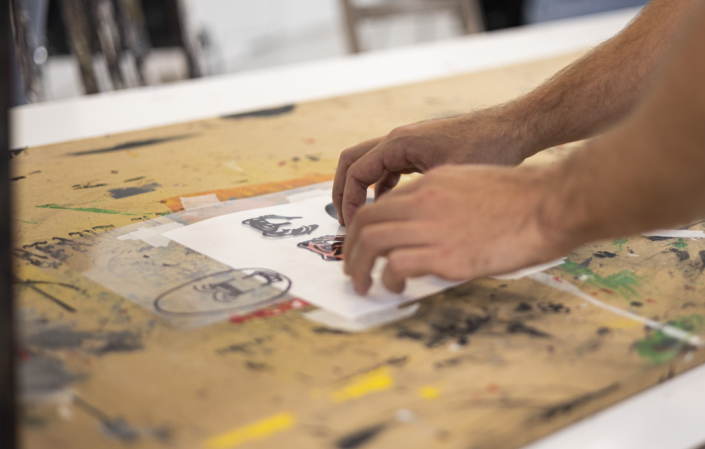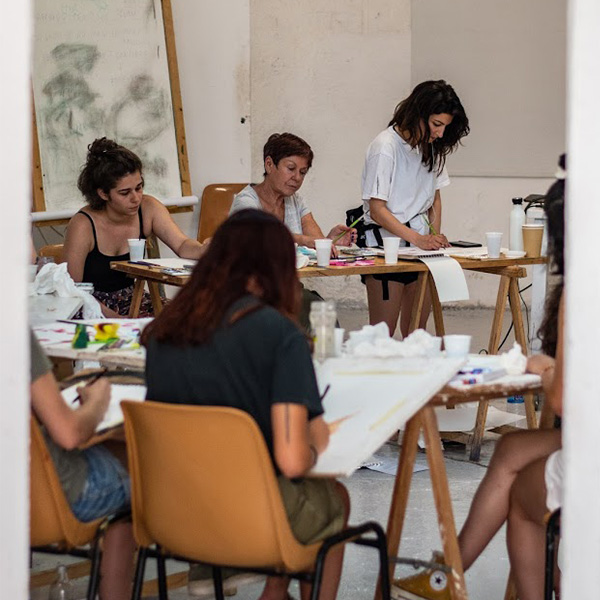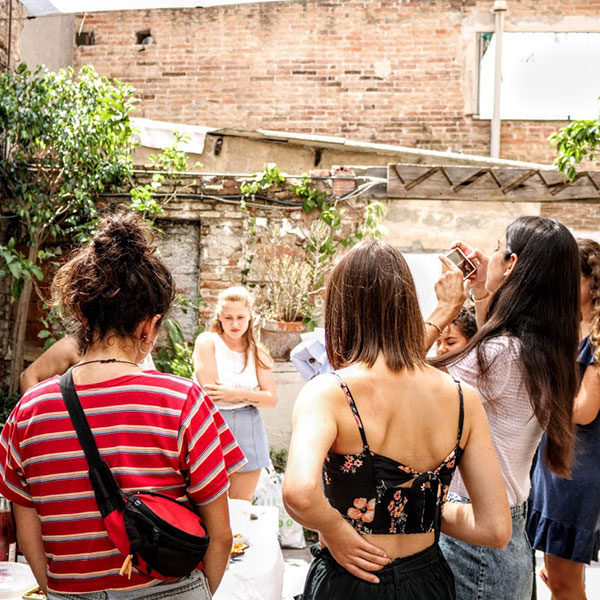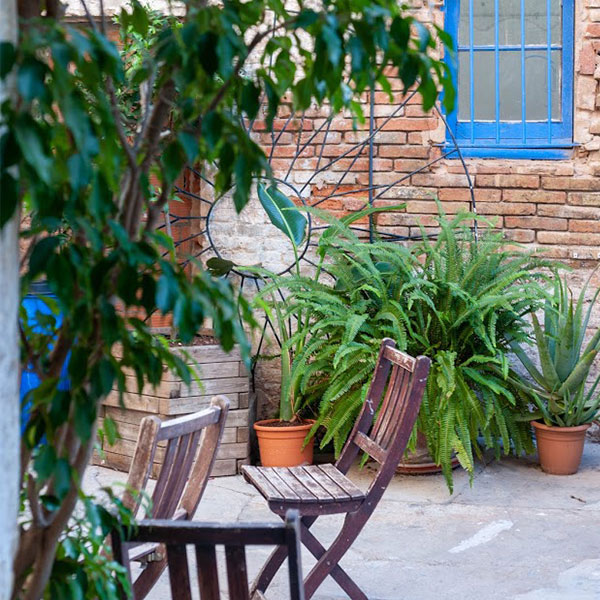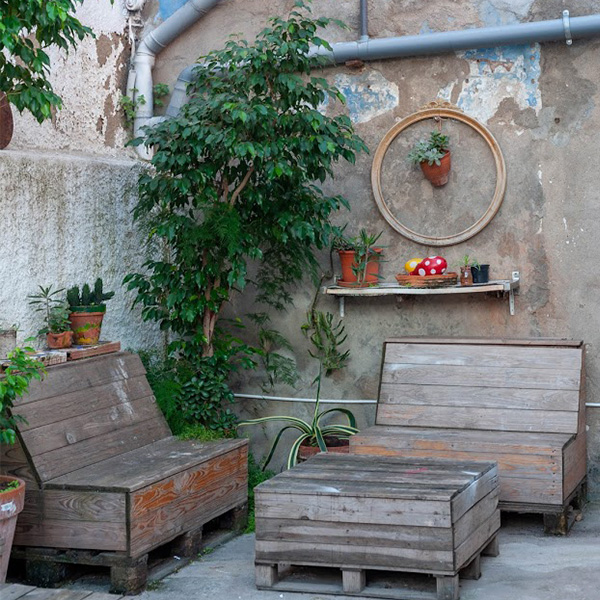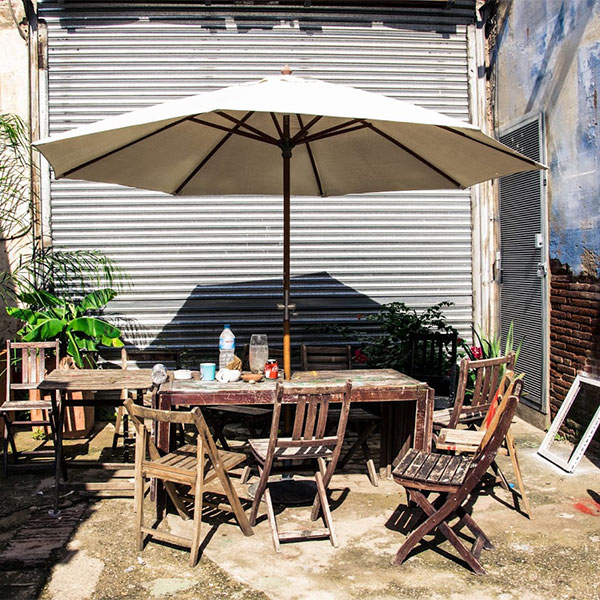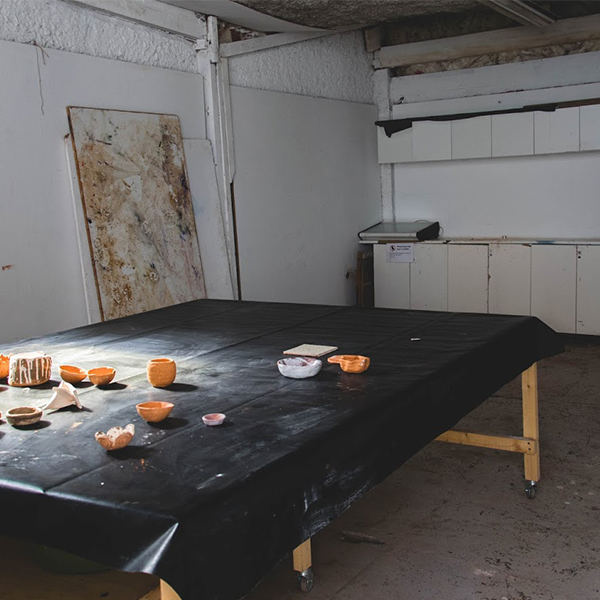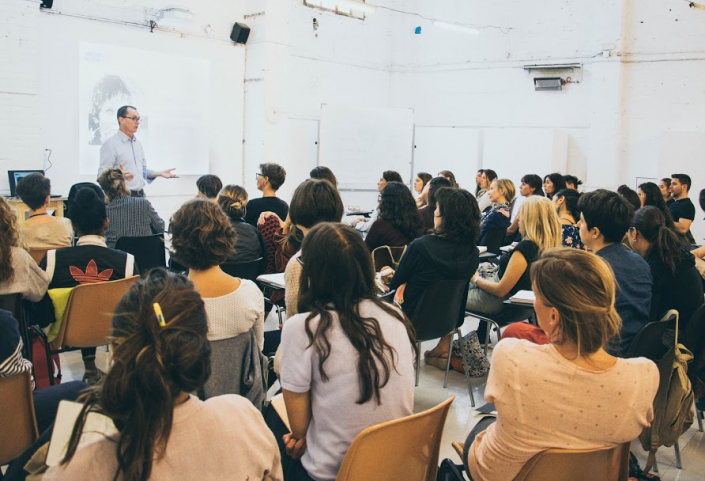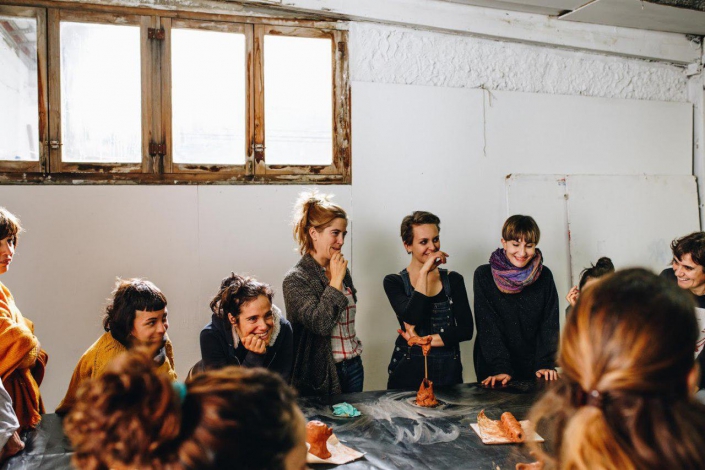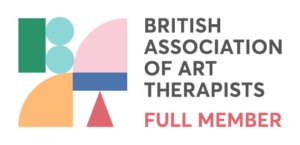WHY CHOOSE METÀFORA?
FLEXIBLE FORMAT
Offered 100% online or blended to suit different schedules.
INTENSIVE DURATION
5-day intensive course combining theory and practice.
INTERNATIONAL ACCESS
Timings adjusted for global participation.
PROFESSIONAL RECOGNITION
Accredited by ATE and FEAPA, the Spanish Art Therapy associations.
COURSE DETAILS
The Autumn Introductory Art Therapy Course offers an introduction to the fascinating world of art therapy. It is an exceptional opportunity to experience first-hand how artistic creation can facilitate the exploration of our inner world.
It is not necessary to have prior experience or knowledge in order to take this art therapy course.
It is aimed at professionals in the fields of education, social work, health and artistic disciplines who wish to enrich their current professions with the tools and knowledge of art therapy. It is also designed for anyone who wants to discover the transformative power of art therapy, as a tool for self-knowledge and personal development.
The Autumn Introductory Course is the first step in comprehensive art therapy training, ideal for those aspiring to become art therapists. The whole training includes the Postgraduate Diploma in Art Therapy and Community Art, as well as the Master’s in Art Therapy.
The course is offered in two different formats (online and blended). Both are equivalents in terms of program, price and dates. Both options are designed to accommodate the diverse needs and preferences of participants.
LEARNING OUTCOMES
Basics of Art Therapy: You will understand the basic principles of art therapy, its history and evolution, as well as its application in various therapeutic contexts.
Art Therapy Techniques and Methods: You will learn how different artistic techniques (painting, sculpture, collage and other creative media) can facilitate expression and the therapeutic process.
Therapeutic Process: You will explore how art can serve as a tool for self-exploration and self-knowledge, and how it can be used to process emotional experiences.
Ethical and Professional Aspects: You will learn about the key ethical and professional considerations in the art therapy practice, including confidentiality, respect for personal boundaries and the importance of professional supervision.
Development of Observation and Evaluation Skills: You will develop skills to observe and evaluate users’ artistic work, identifying patterns that may be relevant to the therapeutic process.
Practical Application: You will have the opportunity to apply what you learn in practical exercises, simulations and case studies, to better understand how to implement art therapy in different contexts.
PROGRAM
THEORY OF ART THERAPY
In these sessions, students will get a historical overview of art therapy, where the main theoretical notions are presented with the different levels of intervention and their applications in different fields and contexts.
Art therapy is applied within numerous groups such as assistance, social, hospital and educational centers. These sessions help to see with whom, how and in what way one works in Art therapy.
The objective of this subject is not only the theoretical definition of the contents, but also the promotion of the capacity for reflection and the reading of specific bibliographic resources , two fundamental aspects for the development of the profession. At the same time, we will try to delve into the various aspects that make up this discipline and its variety of applications and possibilities within the proposed theoretical framework.
What will you learn?
- History and foundations of Art Therapy
- Types of intervention in Art Therapy
- The framework: means, materials and space
- Dynamics and structure of the sessions
- Individual and group intervention
- The role of the therapist
- Training and professionalization
EXPERIENTIAL ART THERAPY GROUPS
The art therapy experience group is one of the pillars of the training. It consists of a small group of students who work on different artistic aspects from experience. A part of the session’s time is used to create art objects and another part to generate a dialogue around these creations.
Guided by one of our art therapists, the participants discover, from the experience itself, some of the situations that give name to the different concepts that make up the theory of art therapy.
The work methodology is widely documented in the specified bibliography and its objective is to acquire notions of group dynamics in groups in which artistic works are carried out.
Experiential groups are the closest thing to a therapy group, which is why they are ideal for learning experimentally some of the elements that characterize this profession. This type of workshop is especially indicated for people who are considering dedicating themselves professionally to art therapy in the future or for those who develop art workshops and wish to obtain resources for creative support.
During the sessions, the artistic work alternates with the debate among the members of the group.
CASE STUDIES
The case studies show the clinical work carried out by professional art therapists in different centers and groups. In these meetings, the art-therapeutic processes carried out with different individual cases or group experiences are presented in detail, allowing a closer look at the different intervention proposals, the development of the sessions, the duration of the treatment, the objectives and the results.
These meetings provide a space for dialogue on the professional practice of art therapy and its wide range of possibilities.
DATES & SCHEDULE
22nd, 23rd, 25th, 27th & 28th of September
The schedule for the introductory art therapy courses is set according to Spanish time (CET), but it’s thoughtfully designed to be convenient for participants joining from different time zones around the world. Online classes are conducted via Zoom and Metàfora’s Classlife platform, while in-person sessions take place at our campus in Barcelona.
For online classes, required materials include paper, wax crayons, pencils, paints, clay, plasticine, fabrics, old magazines, clothing scraps, glue, and anything that can be used as art supplies of some kind.
NOTE: The provided schedules are indicative. The final schedule will be shared with students in an informational dossier a few days before the course starts.
FEES & DISCOUNT
10% DISCOUNT UNTIL THE 5TH OF SEPTEMBER!
Benefit from the 10% discount on full payment before the indicated date.
To guarantee a place on the course, you must pay at least the reservation fee. Otherwise, we cannot guarantee a place on the course. The reservation fee is included in the total price.
Once the reservation fee has been paid, the remaining payment must be made no later than 1 week before the start of the course.
PAYMENT CONDITIONS
1. Enrollment and Reservation Fee
To enroll in Metàfora’s introductory courses, students must complete the registration form and pay the reservation fee or the full course fee.
The reservation fee secures the student’s place and is non-refundable under any circumstances.
If the student cancels or postpones their enrollment, the amount paid will remain valid for a maximum of 12 months from the original course start date (see postponement conditions).
Registrations will not be considered confirmed until the reservation fee has been received.
2. Full Course Fee Payment
The total course fee must be paid no later than 7 days prior to the course start date.
If the reservation fee was previously paid, the remaining balance must also be paid within this timeframe.
Failure to make payment by the deadline may result in the loss of the reserved place and placement on the waiting list.
Once the course has started, no refunds will be issued, either partially or in full.
3. Postponements and Course Changes
Students wishing to postpone their participation or transfer to another course must notify Metàfora in writing at least 6 weeks before the start of the originally enrolled course.
In case of postponement or course change:
- The amount paid will remain valid for up to 12 months from the original course start date.
- An additional fee of €250 will be charged and added to any remaining balance, if applicable.
- If the new course has a higher cost, the student must pay the difference. If the cost is lower, the remaining balance will be credited to the student for future activities at Metàfora, valid for an additional 12 months.
Requests for course changes are subject to availability and the admission requirements of the new course.
No refunds will be issued under any circumstances.
4. Interruptions in Participation
4.1 Due to Involuntary Causes
In the event of an accident or illness, students may request a voucher for the amount paid, valid for any course offered by Metàfora within a 12-month period.
A medical certificate is required to justify the cause of the interruption.
4.2 Due to Voluntary Causes
If a student decides to voluntarily interrupt their participation after the course has started, they will lose their place and must fulfill their financial commitment.
Voluntarily interrupting the course does not release the student from their financial obligations.
No refunds will be issued, either partially or in full.
To resume studies in the future, the student must initiate a new enrollment and registration process.
5. Payment Methods
Payments may be made via:
- Credit card: online on the website, by phone, or in person at the school.
- Bank transfer: the student must clearly include their full name and the course name. Metàfora is not responsible for reservations where this information is missing.
- Cash: exclusively at Metàfora’s offices.
All international bank transfer fees must be borne by the sender. Any fees incorrectly charged to Metàfora will be claimed from the student before the course begins.
Important Note
Submitting the registration form and making the corresponding payment constitutes full acceptance of these terms.
ENROLLMENT
To enroll in this art therapy course, you have to fill out the form and pay either the reservation fee or the full price.
If you have any questions during the registration process, you can call us at +34 93 330 00 89 or write us an email at at@metafora.org.
CREDITS & DIPLOMA
TESTIMONIALS FROM FORMER STUDENTS
ABOUT METÀFORA
Our programs are aimed at women and men from all over the world, with various academic and professional backgrounds. Psychologists, psychotherapists, artists, social workers, nurses, teachers, occupational therapists and doctors, among other professions, find in Metàfora a place where they can expand their skills and knowledge, as well as discover new ways of using art as a therapeutic tool.
At Metàfora, we believe in tailored education and the importance of creating a learning environment that encourages both personal and professional growth. We offer a wide range of training programs that allow students to explore different art therapy approaches and techniques. Our team of teachers is made up of highly qualified professionals with vast experience in their respective fields, ensuring comprehensive and excellent training.
Our location in Barcelona offers students a unique experience, in a city known for its rich artistic and cultural heritage. This, combined with our commitment to educational innovation and the well-being of our students, makes Metàfora a reference institution for those seeking to delve deeper into the world of art therapy and transform their lives and those of others through the power of art.

